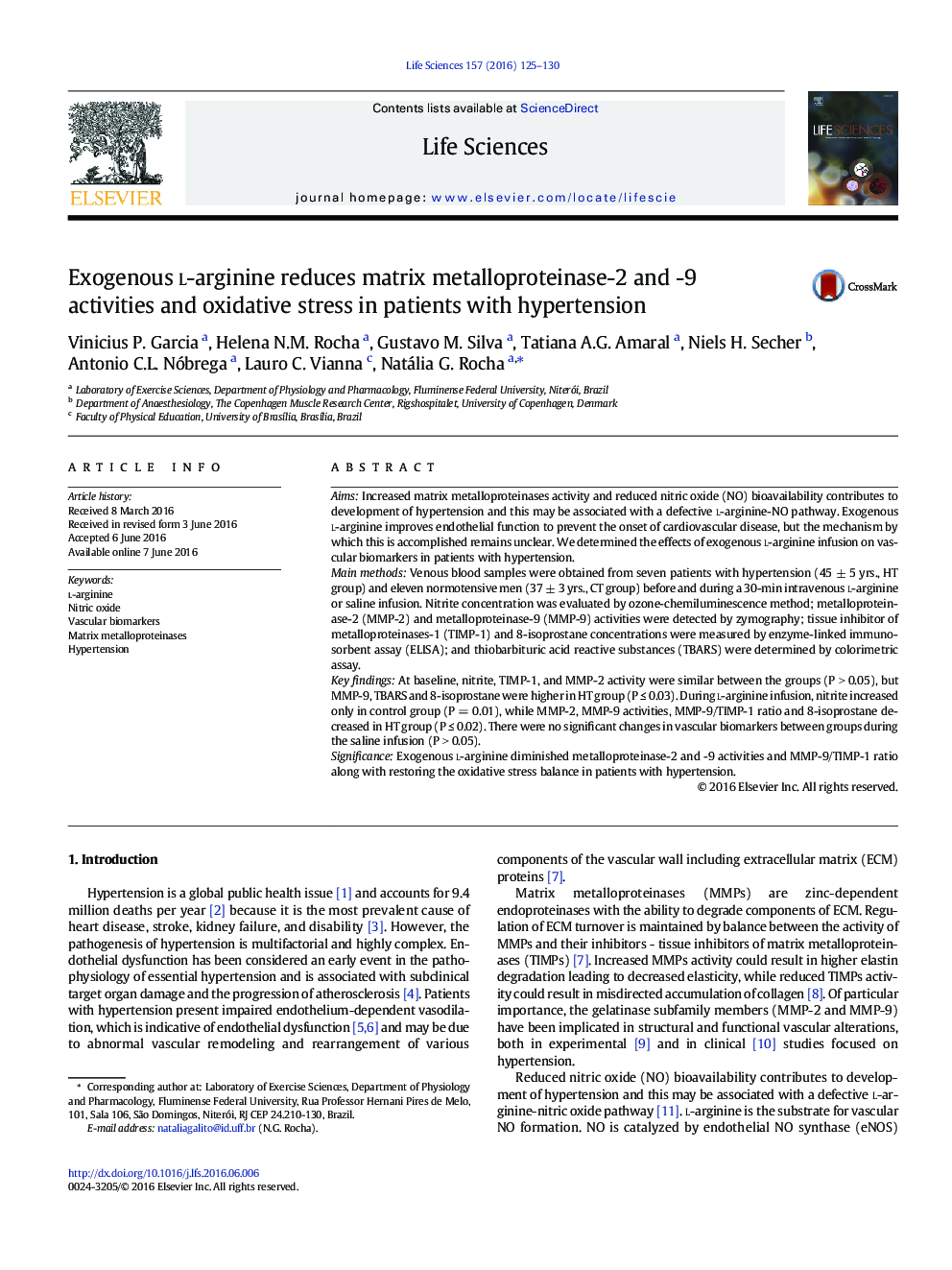| Article ID | Journal | Published Year | Pages | File Type |
|---|---|---|---|---|
| 2550429 | Life Sciences | 2016 | 6 Pages |
AimsIncreased matrix metalloproteinases activity and reduced nitric oxide (NO) bioavailability contributes to development of hypertension and this may be associated with a defective l-arginine-NO pathway. Exogenous l-arginine improves endothelial function to prevent the onset of cardiovascular disease, but the mechanism by which this is accomplished remains unclear. We determined the effects of exogenous l-arginine infusion on vascular biomarkers in patients with hypertension.Main methodsVenous blood samples were obtained from seven patients with hypertension (45 ± 5 yrs., HT group) and eleven normotensive men (37 ± 3 yrs., CT group) before and during a 30-min intravenous l-arginine or saline infusion. Nitrite concentration was evaluated by ozone-chemiluminescence method; metalloproteinase-2 (MMP-2) and metalloproteinase-9 (MMP-9) activities were detected by zymography; tissue inhibitor of metalloproteinases-1 (TIMP-1) and 8-isoprostane concentrations were measured by enzyme-linked immunosorbent assay (ELISA); and thiobarbituric acid reactive substances (TBARS) were determined by colorimetric assay.Key findingsAt baseline, nitrite, TIMP-1, and MMP-2 activity were similar between the groups (P > 0.05), but MMP-9, TBARS and 8-isoprostane were higher in HT group (P ≤ 0.03). During l-arginine infusion, nitrite increased only in control group (P = 0.01), while MMP-2, MMP-9 activities, MMP-9/TIMP-1 ratio and 8-isoprostane decreased in HT group (P ≤ 0.02). There were no significant changes in vascular biomarkers between groups during the saline infusion (P > 0.05).SignificanceExogenous l-arginine diminished metalloproteinase-2 and -9 activities and MMP-9/TIMP-1 ratio along with restoring the oxidative stress balance in patients with hypertension.
